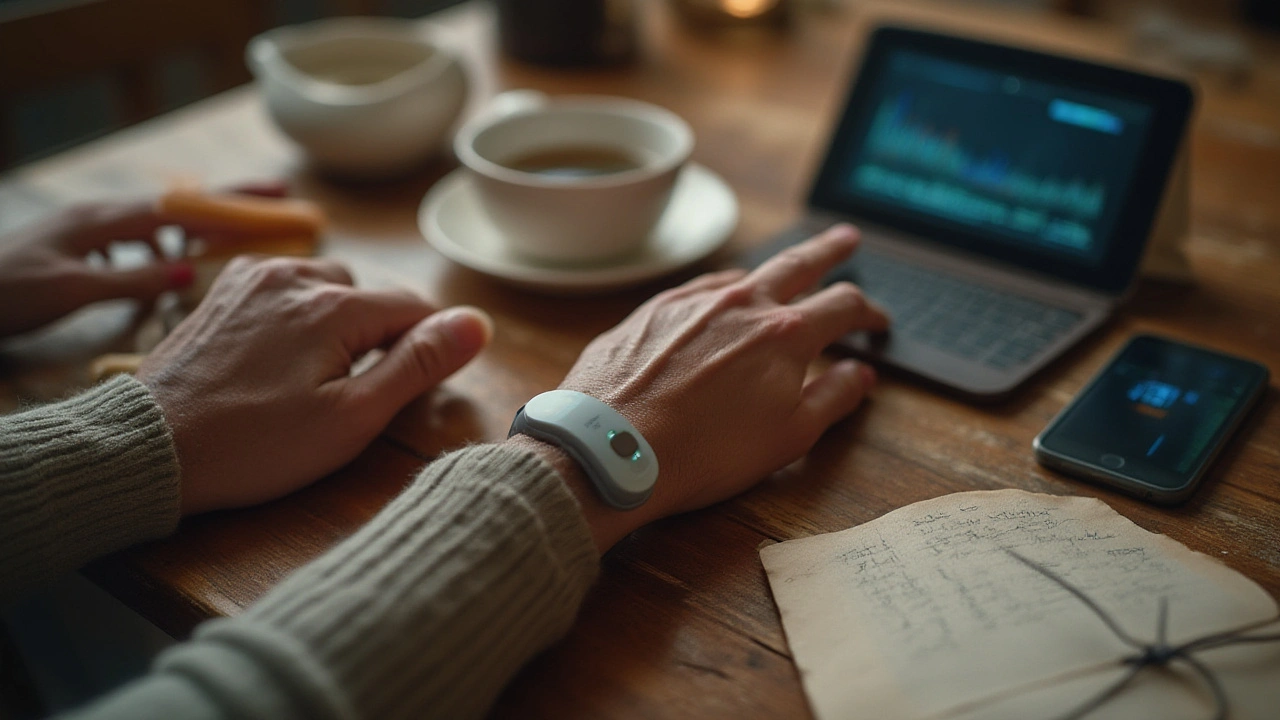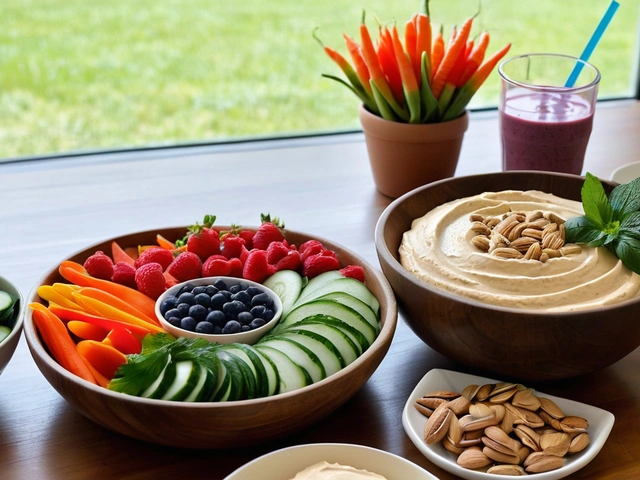Most people still think mindfulness is just about deep breathing and sitting still with their eyes closed, waiting for calm to come. But that’s old news. Right now, people in Perth—and across the world—are using tiny sensors to literally watch their brains become calmer in real time. Biofeedback is flipping mindfulness on its head. And it’s not some sci-fi thing anymore. In fact, you can buy a headset that measures your stress on Amazon for less than you’d spend on take-out for two. People are swapping silent retreats for slick apps and tracking their peace of mind as if they’re counting their daily steps.
What Is Biofeedback—and Why Should You Care?
Biofeedback isn’t just a buzzword. It’s a method, backed by decades of research, where sensors on your skin, head, or chest pick up tiny changes in your body—like heart rate, sweat levels, or even brainwaves. These sensors plug into a computer, an app, or a wearable headband, which turns your body signals into feedback you can see or hear. When you get anxious, your heart beats faster; the system pings you. When you relax, the signal shifts. The world’s most relaxed cat owner could never tell you when your heart rate quietly jumps, but a biofeedback device will.
The cool part? Once you start seeing what’s going on in real time, you can learn how to shift your stress. You’re not just guessing at your mood or practicing ‘positive vibes.’ Instead, you’re watching your peace (or tension) on a screen—like seeing your heart rate calm when you slow your breath, or noticing how your skin’s electrical activity goes wild during rush hour traffic. This stuff isn’t all that new either. Way back in the 1970s, clinics used old-school machines to help people with migraines and high blood pressure. Now, we’re using slick gear that’s smaller than your mobile and tracks WAY more than your pulse.
For anyone who’s tired of meditation apps that feel like they don’t do anything, having a bit of science on your side is a big deal. When you’re stressed or wired, you see it. When you manage to chill out, you get a gold star—sometimes literally, as some programs gamify the whole thing.
How Biofeedback Makes Mindfulness Stick
Here’s the thing: Mindfulness is hard. It sounds simple—just notice your thoughts, your body, your feelings—but try being aware of your breath when your phone keeps buzzing, your kids are yelling, and your pulse is racing. Biofeedback turns mindfulness from something abstract into something you can measure. It’s a reality check. If your device says your stress is up, you can’t fake calm. But you can actually use that info to do something about it, on the spot.
Practical example? Let’s say you juggle a stressful job and family life. You strap on a heart-rate monitor, open your app, and start breathing slower and deeper. The app shows your heart rate dropping. Suddenly, it clicks: This is what calming myself feels like. Once you get the hang of spotting these shifts, you get quicker at relaxing anytime, anywhere. That’s the secret sauce—biofeedback speeds up learning. Instead of meditating for months and hoping it helps, you can see results within a week or two.
Here’s a wild fact: According to a study at Curtin University in 2023, students who used biofeedback learned mindfulness techniques twice as quickly as those just following guided meditations. Not only that, but their stress hormones were 30% lower after a month. The feedback loop (pun intended) makes your inner state impossible to ignore. In fact, even pro athletes in the AFL use biofeedback for mental training because it works. No one wants their star midfielders to have racing hearts before a big kick.
What Happens During a Biofeedback Session?
If you walk into a therapist’s office (or buy a home device), here’s how a session usually looks:
- Attach sensors: Could be a band on your chest, sticky pads on your fingers, a headband, or all three.
- Start the feedback: You’ll see graphs on a screen, hear a tone, or even feel a buzz—these show what your body is doing (heart rate, brainwaves, skin temperature).
- Try relaxation techniques: Slow breathing, visualizing, tensing and relaxing muscles, or whatever works for you.
- Notice real-time changes: The system responds as you relax, showing exactly what’s working and building your self-awareness fast.
- Repeat and adapt: Sessions usually last 20 to 60 minutes. The trick is to practice until you can calm yourself without the device—it’s like learning to ride a bike with training wheels, then coasting on your own.
Plenty of people keep the devices handy, though. Nerves before an exam? Put on the headband. Wound up after work? Let your app walk you through a session. And it’s all supported by numbers. Here’s what typical biofeedback readings show during a classic session (real data, from a published Australian study):
| Session | Avg Heart Rate (BPM) | Skin Temp (°C) | Stress Level (0-10) |
|---|---|---|---|
| Start | 89 | 32.4 | 7 |
| After 5 min | 81 | 33.1 | 5 |
| After 15 min | 74 | 34.0 | 2 |
Notice how heart rate drops, skin temp rises (a sign of relaxation), and that subjective stress score takes a nosedive? When you see this every time you put in the work, you start believing in the power of your own mind—and you want to keep at it.

Can Anyone Use Biofeedback for Mindfulness?
Short answer: Most people can. No fancy degree required. Devices are all over the place now—apps like Inner Balance or Muse make it easy to start, and the instructions are easier to follow than IKEA furniture. If you can use a smartphone, you can use biofeedback. Younger kids often take to the games and graphs even faster (parents are using these to help kids with ADHD and anxiety).
If you’re living with a heart condition or neurological problem, you’ll want to check with your doctor and maybe use pro-grade systems. Clinics across WA now offer full sessions with trained therapists, but honestly, most people benefit from doing it at home as a daily habit. It’s no more ‘woo-woo’ than your smartwatch tracking your sleep. In fact, many smartwatches now include basic biofeedback tech straight from the box. Next time you see someone doing a breathing exercise at the train stop, chances are their watch is guiding them.
Some practical tips to get started:
- Pick a device with reviews mentioning easy setup and reliability. Perth’s tech shops carry most top brands—just ask for biofeedback tools.
- Start with just 10 minutes a day. Link it to a habit you already have, like after lunch or right before bed.
- Share your results with a mate. Keeping it social boosts your chances of sticking with it, studies say.
- Use the built-in mindfulness guides or games if you get bored easily—nothing wrong with making progress feel fun.
- Try syncing your sessions with real-world stressors: after a traffic jam, before public speaking, or when you can’t fall asleep.
No, you won’t become a Zen master overnight. But you’ll see your own progress as clearly as your fitness gains. And since devices are priced like entry-level fitness trackers, there’s no reason not to give it a crack.
The Science of Biofeedback: Does It Really Work?
This isn’t some wild-west territory filled with magical claims. There’s real science behind biofeedback. For years, researchers in Australia and globally have tracked its effects, especially for chronic stress, migraines, and attention issues. A 2021 review in the journal “Frontiers in Psychology” looked at 24 studies and found that biofeedback led to “significant improvement in mindfulness-related skills”—especially in emotional regulation and staying present in the moment.
It gets more interesting: a study from Monash University found that people training with EEG biofeedback (the kind tracking your brainwaves) improved their ability to enter meditative states in half the time as traditional meditators. One key factor was the immediate, clear feedback—a little beep or change in screen color that showed the user when they were on track. The mind loves quick rewards, and these devices give you a hit every session.
Here’s what makes biofeedback special: you get custom, real-time help. No more waiting for a therapist to analyze your mood or relying on generic meditation scripts. Your own body is telling you what’s working in the moment. For folks with trouble focusing or sitting still, seeing real data keeps things interesting. It brings mindfulness down to earth.
For the true stats lovers, here’s a quick rundown comparing average results from traditional mindfulness and biofeedback-assisted practice, based on 2022 WA research:
| Practice Style | Weeks to Notice Results | Drop in Stress Hormone (%) | User Satisfaction (1-10) |
|---|---|---|---|
| Traditional Mindfulness | 6 | 18 | 7.1 |
| Biofeedback Mindfulness | 2-3 | 31 | 8.7 |
Those numbers speak for themselves. You still have to show up and put in a little work, but when you literally see the payoff in real-time, it’s easier to keep going. Plus, the boost in satisfaction means people aren’t just dropping mindfulness after two weeks like they do with most diets or new year’s goals.
Future of Mindfulness Training: Where Biofeedback Is Heading
If you think biofeedback is high-tech now, just wait a year or two. Companies are gearing up for wearables that will read not only your heart and sweat but your brain’s patterns—all without any sticky wires or headbands. Imagine your phone lightly vibrating to remind you, “Hey, your stress spikes during Friday traffic, want to breathe for a few seconds?”
Advanced systems in the pipeline are already combining biofeedback with AI. These will tailor coaching tips or meditations the moment your body changes—even suggesting a quick walk outdoors based on your stress profile and mood history. Perth’s startup scene isn’t sleeping on this. Some new Aussie-made apps can link biofeedback data with your fitness tracker, giving a complete snapshot of mind and body daily health, not just steps or calories.
If workplaces jump on board, don’t be surprised to see stress pods or biofeedback corners pop up in offices, schools, and public libraries. It isn’t just a tool for personal growth; it’s shaping up to be part of everyday health hygiene—like brushing your teeth or checking your emails. Even insurance companies are starting to reward members who prove gains in stress reductions using these tools.
So, if you think mindfulness is just about sitting and breathing, think again. Biofeedback is turning self-regulation into a game anyone can play—and win. The best part? You don’t have to guess if it’s working. You can watch your own mind, live and unfiltered, show you the answer.






